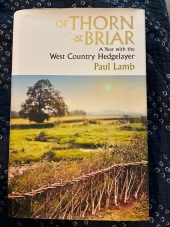
 2
2




 2
2




Blake said, "Could you share me more and ideas to help my hugelkultur garden more suitable to native creatures and native flora for generations to come?




Invasive plants are Earth's way of insisting we notice her medicines. Stephen Herrod Buhner
Everyone learns what works by learning what doesn't work. Stephen Herrod Buhner




 1
1





Invasive plants are Earth's way of insisting we notice her medicines. Stephen Herrod Buhner
Everyone learns what works by learning what doesn't work. Stephen Herrod Buhner




Weeds are just plants with enough surplus will to live to withstand normal levels of gardening!--Alexandra Petri








growing food and medicine, keeping chickens, heating with wood, learning the land
https://mywildwisconsin.org




When you find a caterpillar, pay attention to which plant the caterpillar is eating. Each species can feed only upon a limited number of plants, so knowing the host plant is a big clue.
Invasive plants are Earth's way of insisting we notice her medicines. Stephen Herrod Buhner
Everyone learns what works by learning what doesn't work. Stephen Herrod Buhner
 2
2




 1
1




Blake said, "sunflowers, sorghum, corn and buckwheat to aid birds and other creatures in the short term while aiding the growth and maturity of our native plants in our gardens.
Invasive plants are Earth's way of insisting we notice her medicines. Stephen Herrod Buhner
Everyone learns what works by learning what doesn't work. Stephen Herrod Buhner
 1
1




 1
1












Blake Lenoir wrote:Greetings folks! Toads are an outstanding sight to any garden and are a force to combat pests and prolong the balance to the ecosystem. Could they create burrows under these mounds?








Blake Lenoir wrote:Could I set aside a small puddle or bath for toads to drink or bathe in?





| I agree. Here's the link: http://stoves2.com |


